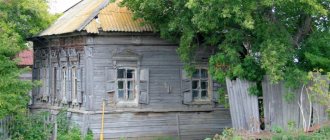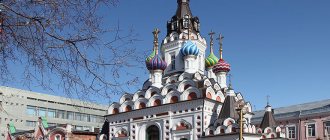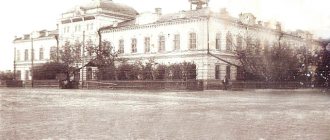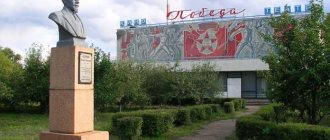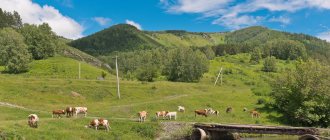Over its long history, the Saratov Volga region, or Saratov region, has had different names. It was the Saratov governorship, the province of the same name, the Lower Volga region. Only in 1936 the territory received its current name.
Legends date the founding of the Saratov land 10 thousand years ago, linking it with the birth of Zoroastrianism (monotheism) and its founder Zoroaster. The first horse was tamed in these places, which influenced the development of all mankind.
The Saratov province was burned by the flames of the Pugachev rebellion, and it was not in vain that the great A.S. Pushkin sought information about the national hero in these parts. Even “Eugene Onegin” is sometimes associated with Saratov society.
Recent history has sent marks from space - it was in the local steppes that the first cosmonauts landed.
Cities and settlements of the region
The region is located in the southeastern part of the Russian Federation and includes almost 20 cities, more than half of them are included in the list of historical Russian cities.
Saratov
On the banks of the Volga is the administrative center of the region - the city of Saratov. It has a history of more than 425 years and has earned the reputation of one of the country's tourist centers. The city was founded as a result of the capture of the Astrakhan and Kazan khanates, and absorbed Tatar and Russian culture, as well as the cultural and architectural heritage of the Volga Germans.
It is generally accepted that the basis of modern Saratov was the legendary medieval city of Ukek. He is associated with Khan Batu, who organized a summer residence here. Currently, City Day (the second Sunday of September) is widely celebrated in memory of this historical settlement. On this day you can hold a real onion in your hands, try on chain mail, and taste national Tatar dishes.
Below we briefly described the main attractions, in detail about them and more in our article about Saratov.
The most interesting places:
- the building of the State Conservatory (built in 1902 and has Gothic elements);
- Victory Park on Sokolinaya Gora (museum of military equipment, “Cranes” stele, mini-museum “National Village”);
- Cosmonauts Embankment (the longest embankment in the Volga region with numerous recreation areas and attractions);
- Central city park with the largest attraction “Lukomorye”;
- Kumysnaya Polyana (natural, protected area on the Lysogorny plateau with numerous springs, Oktyabrskoye and Smirnovskoye gorge at the foot).
Cathedrals, temples, churches:
- Holy Trinity Cathedral (built in the 17th-18th centuries with a large park);
- Church of the Intercession of the Mother of God (built in the 19th century by the architect Salko);
- Temple of the Icon “Quiet My Sorrows” (built at the very beginning of the 20th century);
- Muslim mosque.
Museums:
- Radishchev Art Museum (one of the first publicly accessible Russian museums);
- regional museum of local lore (huge ethnographic collection);
- Museum of Military Glory (open air);
- house-museum of N.G. Chernyshevsky.
Tourist urban areas:
- Kirova Avenue (monument to Chernyshevsky, Melody fountain, conservatory, historical buildings);
- Kirovsky and Volzhsky districts (historical center with numerous buildings of the 18th-19th centuries).
Saratov takes on a special look during national celebrations and festivities. In addition to City Day, Muslim holidays (Eid al-Fitr, Sabantuy) are also interesting. On New Year's Day, the theater square turns into a fabulous extravaganza.
Engels
The city of Engels (former names Pokrovskaya Sloboda and Pokrovsk) was founded in 1747. Until 1941, it was the capital of the Autonomous Republic of Volga Germans, which left a certain mark on its appearance and culture. The city is located on the Volga, opposite the regional center - Saratov.
The first settlements on the site of the modern city are associated with Kalmyk nomads and Khan Ayuki. Here Peter the Great met with this Kalmyk khan.
The founding of the city was due to the development of salt mining on Lake Elton and the construction of the Elton Highway. At the end of the 19th century. Pokrovskaya Sloboda turned into a shopping center in the Volga region.
In different historical periods, various famous people lived and visited the city. Its natives are: writer Kassil L.A., composers Schnittke A.G. and Kovalev V.V., artist Kravchenko A.I., choirmaster Tolochkov B.A. Not far from Engels is the landing site of Yu.A. Gagarin.
Among the attractions that stand out are:
- Holy Trinity Church (erected at the beginning of the 19th century);
- Cathedral Mosque;
- Monuments to Engels, the “Salt Bull,” the liquidators of nuclear disasters, “Those Left Without Burial,” the repressed Volga Germans;
- Memorials to soldiers who died in hospitals, Long-Range Aviation pilots, and fallen military pilots. In 2013, an interesting sculptural composition, “Dancing Couple,” was unveiled.
- Petrov's house (erected at the beginning of the 20th century);
- house-museum of L. A. Kassil;
- the building of the Deputy Assembly (formerly the Central Executive Committee of the Volga Germans);
- registry office building (built at the beginning of the 20th century);
- local history museum.
The Long-Range Aviation Museum is popular because... founded at one of the largest air bases in the Russian Federation.
Interesting and useful facts about the sights of Engels.
Khvalynsk
Khvalynsk is a small city in the Saratov region, but it can be considered the oldest in the Saratov region. It was founded on the Volga Sosnovy Island in 1556 as a guard post and was named Sosnovka. The city is famous as a former Old Believer center, a garden city with delicious apples and the birthplace of the famous artist Petrov-Vodkin.
From the moment of its founding, the settlement was transferred to the ownership of the Chudov Monastery, and the area attracted monks with its solitude. During the time of Peter the Great, a fortress for the archers was built here. The king himself visited her during the Persian campaign.
From the middle of the 19th century. Khvalynsk began to be settled by noble Old Believers, who built several temples. Today, only one church has survived - the Church of the Exaltation of the Cross. Khvalynsk also has a notorious “fame”. In 1892, a cholera riot occurred here, which led to the murder of the famous doctor A.M. Molchanov. and a number of noble citizens.
Main attractions of the city:
- local history museum,
- art gallery (in the former house of the Radishchevs),
- house-museum of K. S. Petrov-Vodkin,
- merchant houses (Kashcheev, Chertkov, Soldatkin, Mikhailov-Kuzmin),
- Church on Sennaya Square,
- Museum of the poet S. S. Narovchatov,
- fire tower with a hundred-year history,
- mosque (built in 1913).
It should be noted that the local history museum was opened at the end of the 19th century. and is located in 2 historical buildings. The Mikhailov-Radishchev mansion, designed by A. N. Voronikhin, stands out especially. The modern glory of Khvalynsk is ensured by the ski resort and the Khvalynsky National Park.
Petrovsk
The small town of Petrovsk is located on the Medveditsa River at a distance of 104 km from Saratov. It was founded by Peter the Great in 1698 as a fortress against Tatar attacks.
It was given the status of a county town in 1780. Initially, the fortress was formed in the form of a rectangle with 8 towers. A church, voivodeship mansions, and barns were built inside it.
In the 19th and early 20th centuries. Petrovsk acquired industrial enterprises (brewery, brick, lard factories), and mills. Fairs began to function.
Main attractions:
- Cathedral of the Intercession of the Blessed Virgin Mary (built in 1880 by architect Salko),
- Temple of the Kazan Icon of the Mother of God (1871),
- Museum of General I.V. Panfilov (opened 1965).
Famous natives of the city are Hero of the Soviet Union, General I. V. Panfilov and poetess N. Yu. Iskrenko.
Marx
The city of Marx is closely connected with the culture of the Volga Germans. It was founded by Baron F.B. de Cano in 1767 as a German colony and was originally named Baronsk. Subsequently, the city was renamed Ekaterienstadt, and then Ekaterinograd.
It received its modern name in 1942. The city is located on the left bank of the Volga, northeast of the regional center at a distance of 60 km.
The city has one of the oldest local history museums with the largest exhibition reflecting the history and culture of the Volga Germans. There are Lutheran, Catholic and Orthodox churches, a Muslim mosque, and a Mormon temple. Traditional German residential buildings are of interest. A beautiful monument to Catherine II has been restored in Marks.
Walk through the parks
When traveling around Saratov, many people start a tour along the central streets of the city, for example, along Kirov Avenue. But you should also definitely visit the parks. You can take a walk in them after excursions. The city is home to Lipki Park. It was made to decorate the territory of a local temple, but then this place became a separate attraction of Saratov. The green place received its name half a century after its opening. There are many different trees, paved paths and benches to rest.
Victory Park was opened in 1975. It contains the monuments “Cranes” and “Silent Bell”, dedicated to those who fell in battle. There is a Museum of Military and Labor Glory in the park. In addition, there is an ethnographic complex “National Village”, where you can learn about all the peoples living in the region. Also, many interesting facts about the past of Saratov can be found in the books of V. N. Semenov .
When visiting Khvalynsk it is worth visiting the national park. Its area is 25 thousand hectares. The green area is divided into 3 parts: economic, recreational and reserved. The place is famous for its rich diversity of flora and fauna. The park also amazes with its natural features: next to high mountains there are ravines, valleys and swamps.
Natural attractions
The Saratov region is replete with places where nature itself has taken care of the beautiful. Legends and tales are added to this. All this creates magnificent natural attractions that attract numerous tourists.
Rock of Stepan Razin
Address: the cliff is located 5 km south of the village of Belogorskoye Telephone: , 24-34-76 Opening hours: 00:00 – 00:00 Mon-Sun Cost of the excursion: 1500-1700 rubles. It can be issued at the address: Saratov, st. B. Kazachya, 116A (corner of Universitetskaya St.).
Near the border of the Saratov and Volgograd regions, on the steep bank of the Volga, the legendary Stepan Razin Cliff is located. It is believed that it was here that the ataman set up a military camp, from where he attacked ships and captured prisoners.
Popular rumor claims that Razin drowned the Persian princess from this cliff. Legends speak of untold riches buried on and around the cliff, wandering ghosts and mystical manifestations. You can hear in detail about the tomb of Marina Mnishek, the ghost of Stepan Razin, the robber's treasure.
The cliff itself is quite a beautiful sight - the top layer is made of chalk rocks, and below the formations are made of quartz-glaunite sands. It is divided by the “Slave” ravine, into which, according to legends, hostages were thrown, and borders on the equally famous Datura Mountain. In this area there are caves of the Old Believers.
Khvalynsky National Park
Address: Khvalynsk, st. Oktyabrskaya, 2-6 Phone: 8 (84595) 2-29-30 Official website: https://nphvalynskiy.narod.ru Visitor center opening hours: 10.00 - 16.00 Tue-Sun, Mon - day off
Cost: accommodation with accommodation in forest and guest houses – 300-600 rubles/day; visit for recreational purposes – 200 rubles/hour; rest in the gazebo “Sunny Glade” - 200 rubles/hour; bathhouse – 800 rub/hour; bicycle rental – 100 rub/hour; excursion to the ethnographic museum and the forest museum – 10 rubles; "Teremok" enclosure - 10-25 rubles; well-maintained hiking trail – 20-60 rubles; excursion by transport – 50-100 rubles.
In the north-eastern region of the Saratov right bank lies the Khvalynsky National Park, formed in 1994. It includes natural and historical attractions. The most impressive thing is the relict chalk pine, which came from the Ice Age.
Numerous springs with slightly mineralized water are famous. The “Holy Spring” has been preserved. The history of the region is represented by the remains of more than 15 settlements of the 6-7 centuries BC.
Thematic excursions lasting 3-5 hours are offered: “Forest Fantasies”, “Apple Orchard”, “Monk’s Cave”, “Holy Spring” and others. On the territory of the park there is an ethnographic museum - “Village Compound”, an open-air cage “Teremok”.
Zmeevy Gory
Administration address: s. Mikhailovka, Voskresensky district, Municipal Administration Telephone: 8 (84568) 2-23-82
The landscape and biological natural monument “Snake Mountains” stretches between the villages of Rybnoye and Beryazneki along the Volga coast for almost 50 km.
This natural complex includes steep coastal walls up to 100 m high, cut by deep ravines, and the Zmeegorsk landscape area with forest and steppe tracts.
In the mountain outcrops you can see the remains of various ancient animals. In some places, chalk deposits create multi-colored screes. The walls of the mountains have a bizarre shape.
Balakovo waterfall
Telephone: Trip cost: 1700-1800 rubles How to get there: by car to the village of Perekopnaya Luka or from the village of Sulak
“Balakovo waterfall” was formed by a spillway dam on the Sulak reservoir. It is located on the Bolshoi Irgiz River, near the village of Perekopnaya Luka on the border of the Krasnopartisan and Balakovo districts. The nearby Dolgiy Gai tract adds beauty.
The best option is an excursion from Saratov.
Volsky quarry
Address: Volsk How to get there: highway P-228 (Volgograd-Syzran). You can get to Volsk from Saratov by train. In Volsk itself you can use the city bus (intersection of Rechnaya and Krasnooktyabrskaya streets).
The old quarry, left over from a previously existing cement plant, has become a beautiful and original landmark of the city of Volsk.
At the bottom of the quarry a lake was formed, along the banks of which there were green spaces. The proximity to a mountainous landscape with chalk formations adds to its attractiveness. From the slope of the quarry there is a beautiful panorama of the Volga and the forest.
Kudeyarova Cave
Address: pos. Lokh, Saratov region. Phone: 8 (9372) 23-9118 Opening hours: 00:00 – 00:00 Mon-Sun Cost: excursion from Saratov – 1500-1600 rubles. How to get there: bus from Saratov (route Saratov - Novye Burasy). Distance from Saratov – 66 km. You can walk from Novi Buras – the distance is about 5 km.
In the Saratov region there is a river Lokh with the purest water, and on its bank there is a village with the same name. A landmark that stands out here is the Kudeyarov Cave.
Folk tales about it go back to the times of Ivan the Terrible, when the legendary ataman Kudeyar lived. An ancient iron door leads into the cave, closed since ancient times. The legend says that Kudeyar immured himself in the cave until a certain hour, when he would come out and rule the kingdom, because... is the twin brother of Ivan IV. His reign should be distinguished by justice and nobility.
Blue Lbishche cliff
Address: Zolotoe village, Krasnoarmeysk district How to get there: The Zolotoe village is 68 km from Saratov and 26 km from Krasnoarmeysk. The nearest railway station is Rossosha, 30 km away. You can get there via the P228 highway.
In the area of the village of Zolotoe in the southern part of the Saratov region, the Volga White Bank, made up of chalk rocks, stretches for almost 2 km. This ridge begins with the Blue Lbishche Cliff, the height of which reaches 100 m. This landmark is visible from a great distance and amazes with its bright, white stripes on the steep rocky walls.
Saratov Reservoir
The large reservoir, formed as a result of the construction of the Saratov hydroelectric power station in 1968, was named the Saratov Reservoir and is rightly included in the list of natural attractions of the region.
It has an area of more than 1830 square meters. km with a maximum depth of 28 m. The reservoir is located at the junction of the Samara, Ulyanovsk and Saratov regions.
On its shore are the cities of Samara, Syzran, Chapaevsk, Khvalynsk, Balakovo. The Maly Irgiz, Samara, Sok, and Chagra rivers carry their waters here.
Kumysnaya Polyana
Any part of Saratov offers a view of a picturesque meadow, where you can breathe in the fresh forest air, take your mind off the bustle of the city and escape from the scorching summer sun.
The massif itself is located on a hill and in order to get there you will have to climb the mountain. The place itself attracts people with its unusual combination: well-groomed meadows, where there are all conditions for spending a day off, and wild, dense forest thickets.
The glade itself is a forest belt, which is located in the west of Saratov. In 1991, the city authorities created a forest park; different goals were pursued - from preserving the cultural and natural heritage of the region to creating a place for out-of-town events. Kumysnaya Polyana occupies 4417 hectares of territory. Among the “local” population you can find hares, foxes, moose, wild boars and occasionally even roe deer. A wide variety of insects and birds, especially owls. The Saratov Peasant Land Bank carried out reorganization work in the forests of Kumysnaya Polyana and improved the territory at its own expense, having previously developed the surrounding lands with summer cottages. All work was done in the late 90s. After this, through the efforts of local authorities, the reserve is periodically restored as one of the main attractions of the region.
For all vacationers, the reserve has a large selection of natural springs, some of them amaze with their pristine splendor, others have been adapted for picnics. Here is just a small part of what the reserve can boast of:
Raspberry spring; Silver Spring; Tatar spring; spring in Money Ravine
Also, the park boasts mountain peaks that even a beginner can climb: Pioneer Peak - the height at the highest point reaches 10 m; Savelyevsky Mountains - approximate height 85 m;
Bald Mountain - offers a breathtaking view of almost the entire territory of Saratov and part of the great Volga River; The ski slope, so popular among local residents and visiting tourists, is located on Cherry Mountain. Weymouth pines are another feature on the territory of Kumysnaya Polyana. They are located on the way to Andreevsky Ponds. There are 5 pine trees in total, but their distinctive features are their vital parameters - age more than 10 years, height 20-25 meters, smooth gray bark characteristic of pine trees, which turns black over the years. The most distinctive feature is the shape of the crowns - an angular pyramid shape, sharply pointed upward. In addition to everything described, pine cones are unusually elongated - up to 5 cm.
Historical places
Gagarin field
Address: Smelovka village, Saratov region. Website: https://news.sarbc.ru/main/2017/03/23/196908.html How to get there: by personal vehicle along the P226 highway (3 km from the village of Novaya Ternovka). The distance from Engels is 32 km. During the celebration of Cosmonautics Day, regular buses are organized from 08.30 to 18.00.
The landing site of the first cosmonaut, Yu. A. Gagarin, is immortalized in the form of the Gagarin Field memorial complex. It is located in the village of Smelovka (between Saratov and Engels).
A monument to the cosmonaut was erected here, which is an exact copy of the obelisk at VDNH in Moscow. Near it there is a monument with bas-reliefs of Korolev and Tsiolkovsky, the lowering compartment of the Vostok ship.
German Titov's landing site
Address: Solyanka village, Saratov region. How to get there: by car along the P226 highway
In the Saratov steppes there is the landing site of the second cosmonaut - G.S. Titov. It is located on the fields of the previously existing collective farm “40 Let Oktyabrya”, near the village of Krasny Kut (at a distance of 13 km).
In 1981, an obelisk 10 m high was built here in the form of a descent module with a parachute dome above it. The authors of the monument are G. Tugushev and V. Kharitonov. Artificially planted trees rose around, creating a green oasis in the steppe.
Tract "Mukhin Dol"
It spreads over 1356 hectares and was created in order to preserve the unique natural landscape of the Volga region. This place has exceptional biological diversity and the unique beauty of the surrounding area. It is thanks to its unique charm that the place was opened for eco-tourism. Oak forests, pine forests with a mixture of deciduous species, in which rare Red Book species are found: red pollenhead, thin-leaved peony, etc. Due to its distance from populated areas, Mukhin Dol boasts a large number of animals inhabiting the territory - moose, wild boars, brown hares and common foxes, as well as resident roe deer, which add variety to the color of the forest population. Woodpeckers are the most common bird species. On the territory of the tract, constant winds blow, especially from the north.
Urbanism
House with a lion in Popovka
Address: Popovka, Saratov region, lane. Pushkina 5 Telephone: Website: www.lion-house.ru Opening hours: need to be clarified by phone, in connection with restoration work How to get there: by road, the village is located 20 km from the city of Khvalynsk
This house is located in the village of Popovka and was built in the 19th century. It is adjacent to monasteries and settlements of Old Believers. Wall paintings on evangelical themes were discovered inside the house, but the lion with human eyes located at the entrance brought the greatest fame to the building.
Currently, the Museum of Folk Monumental Painting is organized in the house.
Road bridge Saratov-Engels
This bridge has a length of 2825 m and spans the Volga, connecting the regional city with the second largest city in the region. It was built in 1965 and impresses with its size and beauty.
The building is famous for the fact that its opening is associated with the visit of Yu. A. Gagarin, and the film “A Bridge is Being Built” was filmed on it.
On the Saratov bank, the bridge goes out to the Cosmonauts Embankment, which is more than 1.5 km long.
Rattlesnake Valley
A valley with open access and a wide pond called the Rattled Valley is located in the Volsky region. Gremyachiy Log - this was the name of this place in the old days, which is confirmed by many maps of that time. Such a sonorous name appeared thanks to real natural sounds, due to the fact that every stream and spring thunders in the valley with its unique sound. But since most of the streams and rivers either dried up or were blocked by dams, Rattlesnake Valley has lost its uniqueness. And people are attracted only by its vegetation, which grows in abundance throughout the entire territory. Tall trees, with dense crowns and dense foliage. In Gremuchy Dole, pine trees grow, both very old and younger.
On dark nights and early mornings, elk and roe deer come to the pond to drink water, even wild boars, rare guests of these places, occasionally look into the valley, coming from the wild forests. The reserve is inhabited by a diverse number of insects; butterflies alone are here in countless numbers and in the most unimaginable colors. And several species of ducks that inhabit the pond every season for breeding are wonderful and wild masters of the sparkling surface of the pond.
Religious sites
Vavilov Dol
Address: Ivanteevka village, Saratov region. Telephone: 8 (84579) 5-11-85 - area of responsibility of the administration of the Ivanteevsky municipality How to get there: bus Saratov-Ivanteevka. Distance from Saratov – 300 km. From the village you will have to walk or hire a taxi - the distance is 12 km.
Vavilov Dol, or Avilkin Dol, is a ravine near the village of Shchigry, Ivanteevsky district. Legend has it that the robber chieftain Vavila settled in this ravine after he was captured and blinded.
Here he turned into a hermit, performing penance and good deeds. Monks began to arrive from all over the world and settled in makeshift caves, linking them into a cave monastery. According to popular rumor, this monastery still operates in our time, and is inhabited by immortal monks.
A church was built on the edge of the ravine, destroyed during the formation of Soviet power. At the same time, the priests were barbarously killed in a ravine. Now there is a chapel in this place and a well is equipped. Pilgrims come here from different parts of the country for prayers and religious rituals.
Serpentine Mountains
The length of the mountains is almost 50 m along the Volga coast. The highest point above the river level is 185 m. The slopes are steep and consist of many ravines and landslides. The wildlife of the Serpentine Mountains is rich in its flora, which includes dozens of rare plant species, most of which are on the verge of extinction.
The animal population consists of wild boars, roe deer, martens, badgers and moose. There is a legend according to which the Serpentine Mountains originated from the body of a huge multi-headed snake, cut in half, which ate village girls every day. The unnamed hero managed to defeat him and the monster’s corpse forever turned into stone, forming a mountain range.
Entertainment
Ski Complex Khvalynsky
Address: Khvalynsk Telephone: 8 (0271) 24-1877 Opening hours: 00:00 – 00:00 Mon-Sun
Cost: accommodation in cottages - 11,600-31,200 rubles; hotel room – 3300-10000 rubles; Russian bath – 2000-5000 rubles; lift – 65-85 rubles for 1 lift or 400-600 rubles/hour; rental of ski equipment – 300-4800 rubles/hour; instructor services 1000-1500 rubles/day.
There is an optimal combination of comfortable snow-covered trails and a unique natural landscape. The complex has a fairly long ski slope - 1800 m. You can come here for one day - just skiing, sledding, snowboarding, or stop by for a certain period and stay in comfortable cottages in the form of wooden log houses.
Equipment rental and a cable car are available. Those interested can use the services of experienced instructors.
If you have not yet chosen where you will live and want to save money when booking, we recommend using the RoomGuru service. Firstly, it contains hotels, apartments and guest houses from many different booking systems, so you won’t miss out on a worthwhile option. Secondly, you can immediately compare prices for one place in different services and book where it is cheaper (this is not always Booking!).
Pinery
Steppe oasis. An extraordinary natural phenomenon is a pine forest among the steppe plain. An amazing feature of this reserve is the very fact of its existence, in a zone of steppe activity, when there were only sands around, nature suddenly created an incredible contrast with the environment - it moved the Siberian forest to the center of the sands. For all its incredibleness, the pine forest of the Volsky region has pine trees over 100 years old and at least 15 meters in height.
Despite the presence of obvious signs of the natural origin of the boron, there is a legend among residents about the artificial origin of the pine forest. Allegedly, a certain nobleman Kokuev ordered the territory to be planted in the second decade of the 19th century.
